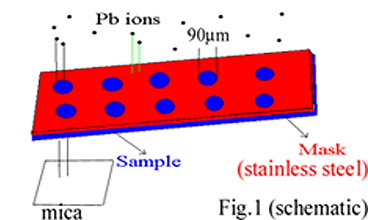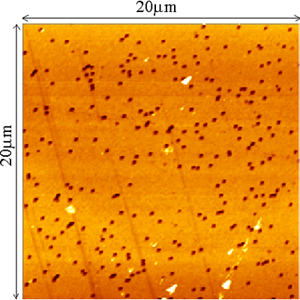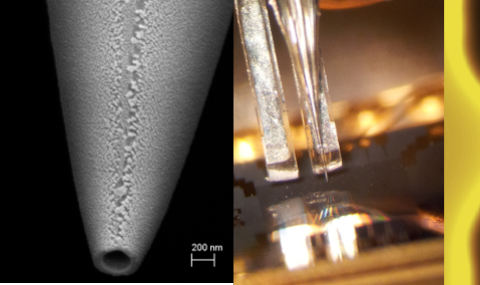Different phases of vortex matter emerge as a result of competition between the elasticity of the vortex lattice, which tries to maintain long-range order, and thermal fluctuations and pinning which try to disorder the vortex matter. One of the ways of artificially controlling the extent of disorder in superconductors is by introducing columnar defects by bombarding the samples with high-energy heavy ions.
A heavy ion after passing through the sample leaves in its wake an amorphous columnar track which becomes a very effective pinning center for the entire length of the vortex. Due to the importance for practical applications, most of the investigations have focused on high densities of columnar defects where pinning dominates over the effects of elastic vortex interactions and thermal fluctuations.
In our study we have tried to focus on what happens when the elastic, thermal, and pinning energies are comparable. We achieve this by using a low dose of columnar defects and investigate the regime where vortices outnumber the columns.

The geometry in which the irradiation was carried out at the GANIL accelerator, Caen, France using 1 GeV Pb ions. The sample is covered by a perforated stainless steel mask which is impermeable to the ions, resulting in formation of columnar defects only within the
unmasked circular apertures, which have a diameter of 90 microns. The use of perforated mask provides a very sensitive method to measure subtle changes in the vortex lattice melting process in the irradiated regions as compared to the neighboring pristine melting.

AFM image which shows the actual location of the columnar defects (dark spots) as imprinted on a piece of mica placed next to the BSCCO sample. It is interesting to note that the Poisson statistics of the heavy-ion irradiation gives rise to the formation of large voids or `pores' in the spatial distribution of columnar defects. As described below, these voids play an important role in formation of 'porous' vortex matter when vortices outnumber columnar defects.
Using differential magneto-optical technique, the melting of the vortex matter in partially irradiated BSCCO crystals has been investigated for different densities of columnar defects. We have observed for the first time an upward shift in the melting line while preserving the first-order nature of the melting transition (see movies below).
The shift increases with the density of the columnar defects and eventually transforms into a continuous transition. In the two movies presented below we show the vortex lattice melting process as a function of temperature at two different fields of 30 and 50 G. The BSCCO crystal of size 0.65×0.45×0.01 mm3 was irradiated through the perforated mask with a density of columnar defects of n = 108 cm-2 corresponding to a matching field Bf = nΦ0 = 20 G.


